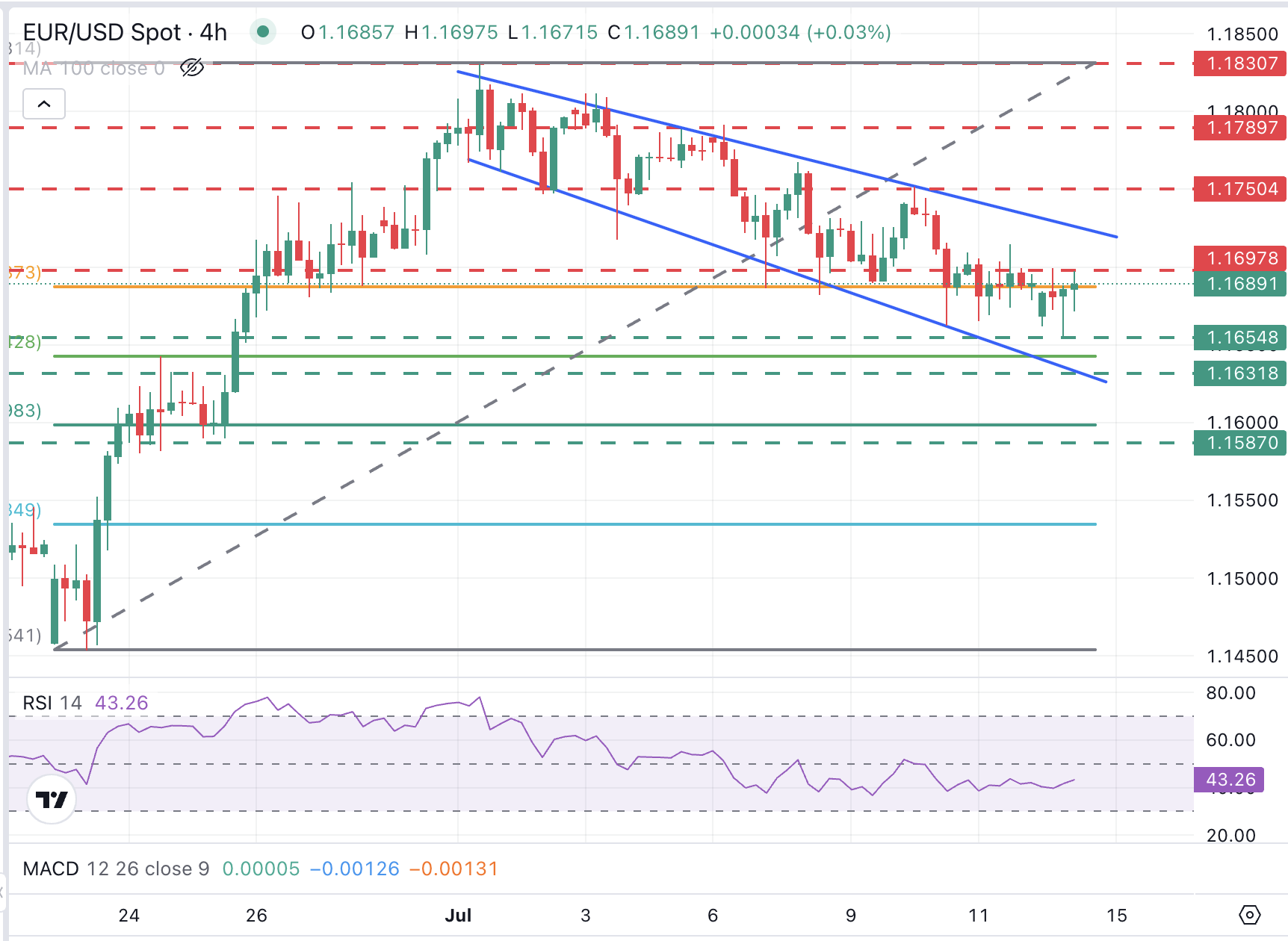EUR/USD pares losses as tariff fears wane and the focus shift to US CPI data

- The Euro bounces up and trims previous losses as investors digest the 30% levies on products from the EU announced by Trump.
- Investors shift their focus to US inflation figures, hopeful of a US-EU trade deal.
- EUR/USD maintains its broader bearish trend intact with 1.1700 resistance capping bulls.
continues trading within the descending channel from July 1highs. Upside attempts remain limited amid a moderate risk-off market, and technical indicators remain well within bearish territory. The Relative Strength Index is low but still above oversold levels, which suggests that further depreciation is on the cards.
Bears failed to confirm below the 1.1660 support area (July 10 and 12 low), but upside attempts remain limited below 1.1700 so far. A bearish continuation below the mentioned 1.1660 might find support at the 50% Fibonacci retracement of the late June bullish run, at 1.1640, ahead of the bottom of the bearish channel from July 1 highs, at 1.1630.
On the upside, above the 1.1700 intraday high, bulls are likely to be challenged at the trendline resistance, now at 1.1730, and the July 10 high at 1.1740.
Economic Indicator
Consumer Price Index (YoY)
Inflationary or deflationary tendencies are measured by periodically summing the prices of a basket of representative goods and services and presenting the data as The Consumer Price Index (CPI). CPI data is compiled on a monthly basis and released by the US Department of Labor Statistics. The YoY reading compares the prices of goods in the reference month to the same month a year earlier.The CPI is a key indicator to measure inflation and changes in purchasing trends. Generally speaking, a high reading is seen as bullish for the US Dollar (USD), while a low reading is seen as bearish.
Economic Indicator
Consumer Price Index ex Food & Energy (YoY)
Inflationary or deflationary tendencies are measured by periodically summing the prices of a basket of representative goods and services and presenting the data as the Consumer Price Index (CPI). CPI data is compiled on a monthly basis and released by the US Department of Labor Statistics. The YoY reading compares the prices of goods in the reference month to the same month a year earlier. The CPI Ex Food & Energy excludes the so-called more volatile food and energy components to give a more accurate measurement of price pressures. Generally speaking, a high reading is bullish for the US Dollar (USD), while a low reading is seen as bearish.
